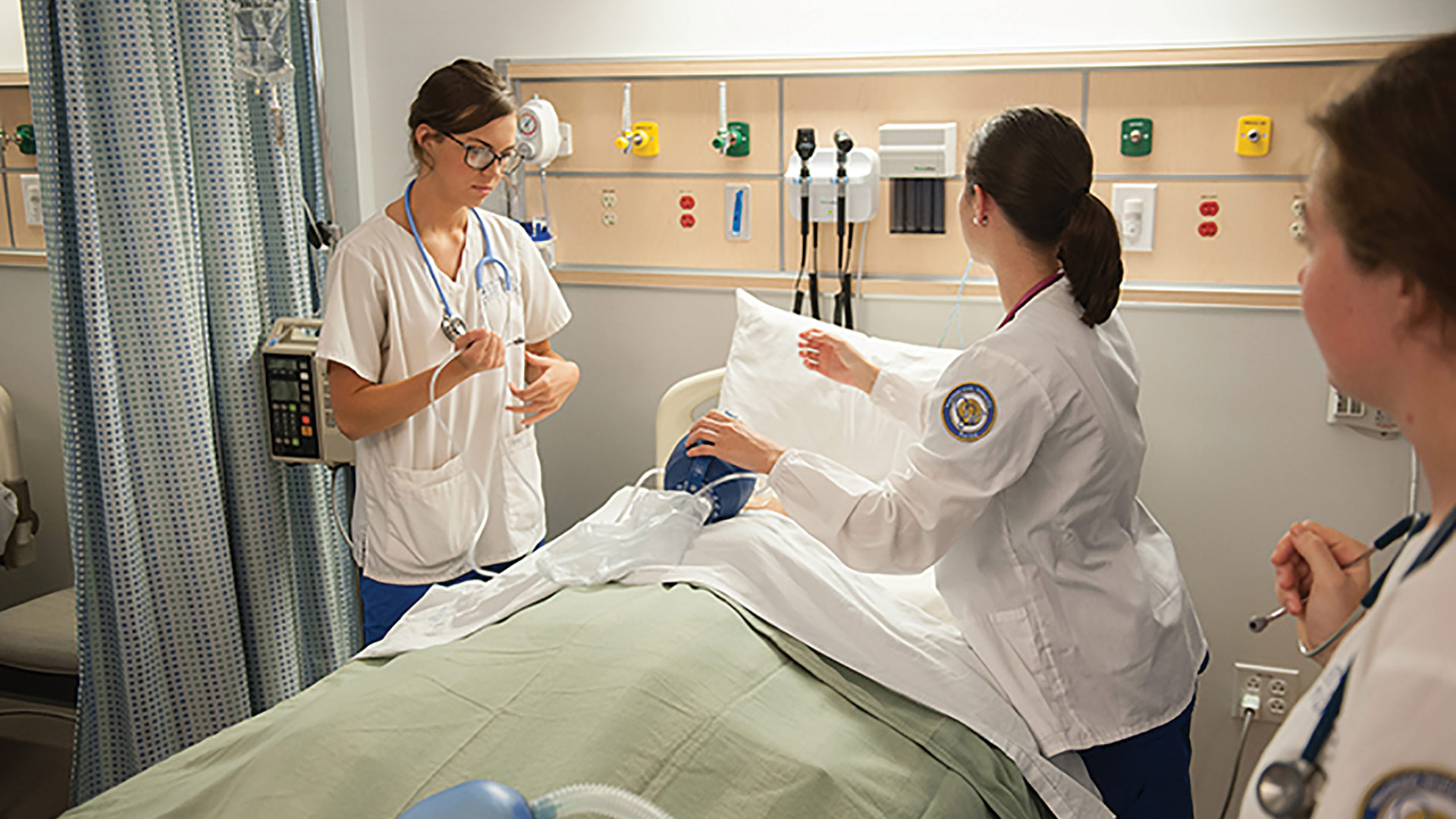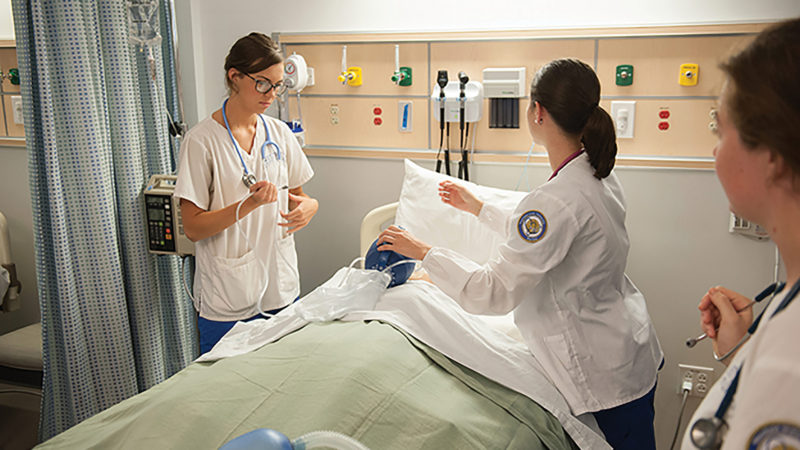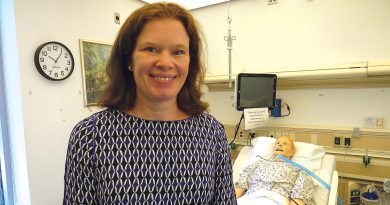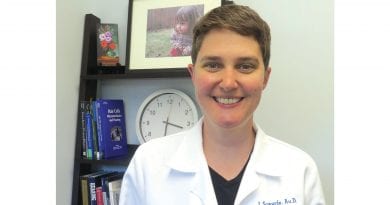Colleges, Universities Adapt to Changes in the Field of Nursing
Meeting a Persistent Need
By Kayla Ebner
Nursing, Lisa Fugiel says, is not a one-size-fits-all discipline.
“One of the awesome things about nursing is that there are so many different opportunities,” said the director of Nursing and assistant dean of the School of Health and Patient Simulation at Springfield Technical Community College (STCC). “It’s great not just because of the change of shifts, which is great for families, but even the types of nursing you can do.”
That’s good news for people seeking entry into this evolving field — as is a persistent shortage of nurses in the U.S., partly due to demographic shifts.
According to the American Assoc. of Colleges in Nursing (AACN), this shortage is expected to increase as Baby Boomers age and the demand for healthcare services grows. Meanwhile, the National Nursing Workforce Study shows that 50% of U.S. RNs are over age 50, and the Bureau of Labor Statistics predicts a shortage of more than 1 million registered nurses by 2022.
To that end, several nursing-education administrators who spoke with HCN said schools continue to add new programs, online courses, and graduate-degree tracks to satisfy the needs of students and their future employers.
“There are a lot of different ways that care is being delivered than we would have pictured care being delivered, say, 10 years ago.”
This means many more nurses will need to enter the workforce in the near future. However, many schools are tapped out, and a lack of professional nursing instructors prevents programs from being able to accept more students.
Marcia Scanlon, associate professor and department chair of the Nursing & Allied Health department at Westfield State University, noted that, between WSU’s two nursing programs — one traditional pre-licensure program and one RN-to-BSN track — about 600 applications are received annually to fill an enrollment class of 36.
“It’s highly competitive and highly selective, but nursing students in general apply to about eight places,” she said.
Fugiel said around 400 applications are received for STCC’s associate of science in nursing program, and about 112 are accepted.
This strong competition, the constant need for nurses, and an ever-changing healthcare industry make delivering a robust education to nursing students more imperative than ever.
“There are a lot of different ways that care is being delivered than we would have pictured care being delivered, say, 10 years ago,” said Karen Rousseau, dean of Health Sciences at American International College. “We’re in a time where healthcare is changing how it looks.”
In response to the hefty need, colleges and universities are doing everything they can to prepare nursing students for the complex healthcare world they are soon to enter, including offering more advanced degrees, more online program options, and more classes focused on specialties in nursing, as well as providing interprofessional training to prepare students for the team of healthcare professionals they will meet on the job.

For this month’s focus on healthcare workforce, we spoke with these educators about the recent changes in the nursing field and how they are adapting to them today — and for the decade to come.
Raising the Bar
Elms College has seen a significant increase in nurses earning at least a BSN, and Cindy Dakin, head of the master’s program in Nursing, thinks this will soon be the norm all over the country.
“I think it’s definitely where we’re heading because of the way healthcare is evolving, and the need for more educated nurses in advanced roles,” she said. “If you want more nurses with a BSN, then you need more nurses with master’s and doctorates to educate them.”
Teresa Kuta Reske, director of the doctor of nursing practice program at Elms, added that a more robust education in school amounts to more positive outcomes for patients.
“Better patient health outcomes may result in less hospitalizations and a reduction in illness because nurse practitioners and nurse leaders are focused on exploring care delivery from quality standpoints, including how satisfied patients are with their care,” she explained. “The strength of this is having an educated workforce that understands these connections.”
One major development in educating more nurses to fill the gaps in the national shortage has been the evolution of online programs. Many students, especially non-traditional students, are juggling work and family life, and welcome an opportunity to receive their education, or at least part of it, from home.
At Elms, Dakin said moving from an in-classroom master’s program to, eventually, an entirely online track has made a huge difference for students.
“We started out as a totally face-to-face program, and then, as a few years passed by, it became obvious that we needed to be more flexible,” she noted. “We knew that, if we really wanted to do our best to enable nurses to get a graduate degree, being totally asynchronous online was the way to go. Online is definitely going to be the wave of the future, if not the present.”
Another wave taking the nursing industry by storm is the involvement of interprofessional education, or collaborations with not just other nursing students, but other healthcare professionals as well.
“We’re bringing in physician-assistant students, EMTs, social workers, and trying to be more interprofessional in our educational approach,” Scanlon said. “We’re not just nursing; we’re trying to be more interprofessional and collaborate with other people.”
As a result, students aren’t meeting these people for the first time in the field and know how to work with them in a professional manner when the time comes. In order to encourage these connections, once a semester at Westfield State, a conference is held where nursing students can meet people from fields like pharmacy and social work.
“Nurses are the largest part of the healthcare workforce,” Rousseau added. “In healthcare, we work within an interprofessional team, so it’s important for nurses to learn how to work within that team and collaborate for the best patient outcomes.”
Care Where It’s Needed
Overall, those who spoke with HCN agreed there is a need for nurses now, and probably always will be. As a result, while nursing students may not get the exact position they want right away, there should be a job waiting for them when they graduate.
“We always tell our students, ‘you’re not going to get the shift you want, the specialty you want, at the hospital you want,’” Scanlon said, adding that geographic location plays a big role in this as well. “There will always be a job for nurses; it just might not be in the state.”
No matter how healthcare and nursing continue to change, college administrators will strive to adapt programs and create more options for students in order to ensure patients are receiving the best care possible.
“Healthcare is changing so fast,” Rousseau said. “We’ve got to keep pace with that so that the new graduates are out there and ready to provide care at the level that patients need it.”




